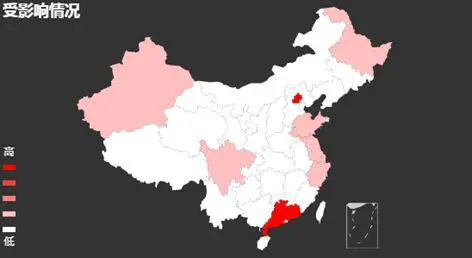China’s southernmost province of Hainan is known for its freshwater aquaculture, or fish farming. Tilapia is the province’s largest aquaculture export item.
More than 95 percent of tilapia production in the province is exported – mostly to the United States and Europe. This is perhaps why, despite the industry having been around for almost 20 years, many local Chinese may not have had a taste of this freshwater fish.
In 2015, Hainan’s tilapia industry saw a downturn. While production volume rose, exports fell on the heels of global competition and higher local labor costs.
This, according to Han Han, founder and executive director of NGO China Blue Sustainability Institute, is partly why local processing plants have sought to diversify their channels. They are now also targeting the domestic market.
This also comes as Chinese consumers have a growing appetite for a large variety of seafood, and tilapia is one of them, she said.
“In the past, the locals liked to eat marine fish. Freshwater fish is relatively alien to them. But now we see more and more Chinese choosing to order tilapia in restaurants and to cook them at home,” Han Han noted.
“Tilapia has got good protein. It is affordable (not as expensive as cod). It is boneless and good for the kids and elderly.”
This is also given the fact that Hainan is the best place when it comes to air and water quality, as well as soil conditions, Han Han quipped.
China is the world’s largest tilapia exporting country at 1.86 million tonnes in 2016 – a third of global supply, down from over 50 percent in past years, and Hainan is the second largest tilapia exporting province in the country.
On the road to sustainability
Founded in 2015, China Blue has sought to reinvigorate the industry, especially small to medium-scale farmers who account for more than 80 percent of Hainan’s tilapia production, according to Han Han.
“In the past, small-scale farmers were pretty much left with themselves to find a way out. This is a unique bottom-up approach of reorganizing the farmers together to be better informed about the environment and market,” she said.
The first China-based NGO in promoting sustainable fisheries has been striving to get farmers to adopt a Code of Good Practices developed locally in the past two years.
Han Han also commended the government’s efforts in recent years to encourage large-scale producers to install wastewater treatment facilities, inspect farms and hatcheries, as well as to strengthen requirements for farming permit application.
Han Han is passionate about reorganizing fish farmers in Hainan to be better informed about the environment and market.
With only a small portion of local fish farmers complying with these standards so far, Han Han suggested a two-pronged approach going forward.
“For the technical aspect, we believe the farmers should be facilitated to grasp more technology, such as automatic sensors to monitor water (for 24 hours) with precise data, and to record their daily practices. That will help to save energy costs and lower environmental impact, but more importantly, help ensure animal health for general production,” she said.
“For the institutional aspect, we believe individual farmers should be better organized together in a way that they can access more up-to-date information about the market and technology. They can also synchronize their practices to face challenges from natural disaster or disease issues.”
When asked about international standards, Han Han brought to light the fact that these standards are developed by industry players in the west, and hence, may not take into account the local features and context.
Han Xuefeng seeks to help better position the quality of Hainan’s tilapia in the international market.
That said, tilapia prices remain low on the international market, which has impacted fish farmers, according to Han Xuefeng, secretary-general of the Hainan Tilapia Sustainability Alliance.
“Having been around for 20 years, Hainan's tilapia industry is actually quite mature. From its seedlings, feed, to processing, operations and exports. But this has not been represented in prices,” he said.
“And so this year, we are exploring how to better represent the price differentiation of Hainan's tilapia, according to its quality, on the international market.”
Han Xuefeng said the alliance will help train farmers in the use of scientific means and data analysis to improve standards of farming.
Livelihoods improved
Fan Biyan’s medium-scale farm is among the 30 pilot projects which have applied the Code of Good Practices in the past two years. These include keeping a daily log book, using microorganisms to adjust water quality and disinfectants to reduce disease outbreaks.
“I came to Hainan in 1996, and from knowing nothing about fish farming to knowing a little, and to now farming tilapia well… tilapia has changed my life,” Fan said.
“When I first came, I did not have any money. Now I have a home and can send my son to the United States where he is studying to be a pilot. It has given me an entrepreneurship platform,” she added.
Fan Biyan says she will continue to farm tilapia as long as she can.
She manages four farms totaling 150mu (100,000 square meters) in size. And with a cost of 3.80 yuan per kilogram, which she sells for 4.20, Fan still makes a profit, albeit small.
“If you put your heart into farming tilapia, coupled with the fact that the water and soil conditions are good here [in Wenchang, Hainan], this industry is profitable.”
At a fish farm in Wenchang county in Hainan, one of China’s major fish production hubs.
(CGTN)
 简体中文
简体中文



